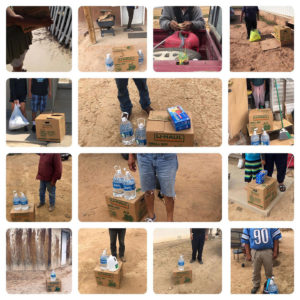“The Right Blend of Stability and Danger”
Circle of Peace Church of the Brethren
Peoria, Arizona
By Benjamin Kreider
 I kept hearing that Circle of Peace Church of the Brethren “has been a church longer than Arizona has been a state.” The well-produced video on the church website under “Who We Are” mentioned it. Pastor Jeremy Ashworth and one of the church board members also referred to this history. Had I not spoken to them or explored the church’s website I would not have known that Circle of Peace (COP) was a church founded over a century ago. The physical location does not suggest this longevity – the church is a stucco Mission style building set on a five acre lot surrounded by houses and businesses in Peoria, a town connected to the sprawl of Phoenix. The building fills part of the dusty lot, and the rest of the lot includes a Chartres-style labyrinth built out of desert stones, parking lots, and two bright patches of green irrigated grass that can be seen by google maps and in the videos giving directions for outdoor socially distant COVID-era worship. A distressed pallet-wood backdrop at the front of the sanctuary frames Pastor Jeremy’s sermons.
I kept hearing that Circle of Peace Church of the Brethren “has been a church longer than Arizona has been a state.” The well-produced video on the church website under “Who We Are” mentioned it. Pastor Jeremy Ashworth and one of the church board members also referred to this history. Had I not spoken to them or explored the church’s website I would not have known that Circle of Peace (COP) was a church founded over a century ago. The physical location does not suggest this longevity – the church is a stucco Mission style building set on a five acre lot surrounded by houses and businesses in Peoria, a town connected to the sprawl of Phoenix. The building fills part of the dusty lot, and the rest of the lot includes a Chartres-style labyrinth built out of desert stones, parking lots, and two bright patches of green irrigated grass that can be seen by google maps and in the videos giving directions for outdoor socially distant COVID-era worship. A distressed pallet-wood backdrop at the front of the sanctuary frames Pastor Jeremy’s sermons.
The church’s public name does not include “Brethren.” Instead, the association with their denominational family is noted as “weird name, good church” on the website. Yet I wondered if this history was invoked with pride for the very reason that the world around the church and the world of congregants’ lives has been built up and changed so rapidly. A world where people are longing for connection and community, for a circle where they might belong. The online content – social media posts, sermon series and website – felt savvy and intentional, with an eye for digital marketing and design. Yet something about the beliefs and the way people talked about the church and interacted with one another was reminiscent of the Mennonite churches I have attended. There were Anabaptist values at work here: peace, community, and a joyful unpretentiousness in shared work. These shone through in the well-produced video sermons, the array of community groups, the Bible studies, artful welcome packets, and the hybrid worship during COVID.
Circle of Peace, formerly the Glendale Church of the Brethren, made a strategic move to a new location in Peoria. Even though this years-long process of re-planting was not easy – with rocky pastoral transitions and struggles to grow membership – it gave the congregation a unique identity: a fusion of entrepreneurial energy with the gifts of an established church. One interviewee described Circle of Peace as “a really cool hybrid of both a legacy church and a missional church plant.” I wonder if Circle of Peace’s experience of God’s faithfulness in community through difficult times and transition opened them up to reach out in creative and risky ways to offer Jesus-centered community to those hungry for it. This outward-looking energy within the congregation combined with Pastor Jeremy’s pastoral gifts has fostered community for those looking for an authentic relationship, as opposed to the mass-produced “cookie-cutter Christianity” that proliferates in the suburbs of Phoenix and elsewhere.
Circle of Peace was a church plant of the Church of the Brethren in the late 1800s. They had been in a more downtown neighborhood that people had moved away from; by the 1990s, most of the congregation was not living there. As the membership declined and aged, they decided to sell their building and look for a new spot to build and try to relaunch the church. Was this White flight as their neighborhood became increasingly Catholic and Hispanic? Or was this a call to a new and risky reimagination of church? With it came the name shift from “Glendale Church of the Brethren” to “Circle of Peace Church.” The dropping of “Brethren” from the public title of the church was an example of a difficult shift. The big changes didn’t mean that new members followed. As Deb, one church leader, described, they had the building, but it didn’t mean that people would come. They thought that they would somehow find regrowth through just building and inhabiting a new church building.
In the aftermath, the church struggled through rocky periods of pastoral transitions and membership decline. In the words of one member: “We burned up all the conflict.” The congregation was not necessarily willing to change and try new things, and the right pieces were not quite in place. This meant that the congregants themselves had to carry the load for quite a few stretches in those periods. Deb’s dad had been one of the pastors at the old location, and she had grown up there as a kid and later came back to the area. Now a leader and church board chair, she spoke with much emotion about the faithfulness and fidelity of the elders who put out so much and were able to pay for this new building, investing in a vision they would not see fully realized. The risk that the elders took, leaving a location and blessing future church members with a renewed and relaunched vision, provided the church with the creative seedbed of their current thriving. As a result, the church can name the gifts in their theological tradition and proud past while also showing the willingness to enter the dangerous work of inviting newcomers in and reaching out through technology, relationships, and follow-up. In Pastor Jeremy’s words, when he took the job, it was “the right blend of stability and danger.”
Pastor Jeremy had revitalized a few different churches, transforming struggling congregations to thriving by the time he left. Jeremy said that “church decline is a growth industry. If you are able to do that, people are coming after you.” After those years, however, Jeremy wanted something a little bit more stable. During an interview with me, his thoughtfulness about church planting and missions was clear. He used a lot of dynamic language, stories, and examples. In our conversation, you would hear him say, “Ben, you should come out to Arizona and see what we’re doing and help us out and maybe you can plant a church or something.” In the way he interacted with me, it was never just a maintenance mindset for him; it’s always onto the next opportunity. Circle of Peace Church, then, was also in the right place, looking for someone that could be there and help them grow to a new place in their life. Circle of Peace described it as a perfect match. Jeremy’s willingness to creatively reach out and invite others to experience the love of Jesus led Circle of Peace to thrive – growing in number and expansiveness of vision in these past few years. Right before COVID the church had just begun two worship services because they had grown out of their small space. The church was even contemplating a new building. Things have thrived and taken off under Jeremy. However, just because they are in a new neighborhood with more people brought in doesn’t mean it’s still not hard work. The difficulty in the more recent years has been how to maintain progress, as there can be turn over with some of the newer members.
At the core of Jeremy’s approach is a combination of “nuts and bolts” and “heart and soul.” He has written a book on mission and loves talking about the mechanics of what the church is doing. He is especially willing to externalize and describe the change process. This seems like a lifelong passion, for he was part of other “church turnarounds” at other Brethren churches before joining Circle of Peace. For instance, in the fall of 2020, I found myself listening to more overtly political sermons in other churches. Listening to Jeremy focus on Jesus as primary object of Christians’ allegiance during this same time period, however, conveyed much about his thoughts on theology and church change. Though a driver and shaker within the church, he is reluctant to make Circle of Peace a celebrity church. He instead makes it known that this is not a church where you can hide. He keeps making that clear in the regular services that are structured and centered around his messages. The contemporary liturgy of welcome, prayer, singing, sermon, and sending structures attempted to ensure participation of members. His Sunday preaching and interpersonal interactions with congregants was displayed in the small Bible study group that met to discuss sermons. With additional scriptures, they listened and engaged with his preaching and spoke admiringly of him. It was clear they took his teaching seriously and reflected on it for their daily lives. His leadership of board meetings demonstrates how he frames the church’s response to the pandemic as an opportunity for pastoral care. He pushed the meeting forward efficiently and exhibited humor and joy with a willingness to center questions of budget and strategy.
One wonders if what is at the core of this thriving – the obvious joy and love of being with one another that I felt in the Zoom meetings – is the dynamic pastoral leadership of Jeremy Ashworth. Certainly, but it is also his tight fit with the passion and vision already present in the congregation before his arrival that allows the congregation to thrive. “There’s something different here, and we are not trying to be a ‘cookie-cutter church.’ The community both tries hard to limit barriers to entry, such as the “weird name” of “Brethren,” but also strives to be a “community where you can’t hide.” Jeremy mentioned that this is something that unites the church, for people desire real community. The focus group had lots of insight on this. One member said that “the church just has a different dynamic about it that works . . . If I were to put [it into words], I don’t feel like the church is a consumer church, it’s really a community. That’s not always easy to find.” This is a testament that was well elaborated upon by one of the newer members:
I see the church has this core commitment to the idea of community . . . Bonding and connecting and being there, all those things are being pushed to the front, [and] I think they’ve always been there. . . [When] I went to the first potluck, and I’d never been treated, that [way before.] . . . They have a genuine just open-heartedness. And they shared their stories and wanted to hear our stories. And to me, that’s just a huge one, something you can’t fake, that kind of community . . . But the people that I’ve gotten to interact with, there’s something substantial there . . . And I think that’s a subtle, but very powerful representation of God’s presence.
These shared values of the priority of community extend from sharing vegetables in the winter to sending seeds, welcome packets, physical rocks, and journals through the church’s Touchpoints ministry. “Touchpoints” were not just delivered to newcomers; these little gift bags were delivered to every single member, attendee, and prospect on their databases four or five times throughout the pandemic. One of the challenges to the church’s community-driven discipleship was the pandemic, as members are typically “high touch people” who know each other and give hugs. In response, the leadership wanted to make sure people didn’t fall through the cracks in the pandemic. Theologically, this emphasis on God being experienced in community is Anabaptist in nature.
 Ultimately, for the congregation the emphasis is not about how they talk about God, but about how they live with one another. The understanding that Jesus came to offer a way of life and that newcomers are invited to experience that life with this congregation are their overriding principles. Their missiology is that of a church that is open about sharing their faith through relational evangelism. The emphasis on “community language,” indicates their purpose of being as intentionally welcoming as possible in reaching out and bringing new people into the church. As a public demonstration of their identity, they describe God as the God of peace, the One whose peace ripples outward, working through community. I think sometimes this has been a way for Pastor Jeremy to navigate the challenge of having a purple congregation in a very purple political state of Arizona especially amidst the inferno of 2020.
Ultimately, for the congregation the emphasis is not about how they talk about God, but about how they live with one another. The understanding that Jesus came to offer a way of life and that newcomers are invited to experience that life with this congregation are their overriding principles. Their missiology is that of a church that is open about sharing their faith through relational evangelism. The emphasis on “community language,” indicates their purpose of being as intentionally welcoming as possible in reaching out and bringing new people into the church. As a public demonstration of their identity, they describe God as the God of peace, the One whose peace ripples outward, working through community. I think sometimes this has been a way for Pastor Jeremy to navigate the challenge of having a purple congregation in a very purple political state of Arizona especially amidst the inferno of 2020.
Through the pandemic period, several questions remain for the church. What will the name “Circle of Peace” mean to the church as time goes on? What will their relationships with Anabaptist theology and the Church of the Brethren denomination look like as the congregation grows and changes? What kind of relationship will Pastor Jeremy and the church vision navigate with members in the congregation upon resuming in-person worship and fellowship? Finally, anticipated changes in the church’s context and the impact of the pandemic on the church’s building project and ministry areas raise other questions. Nevertheless, the church’s ecclesial imagination of experiencing God’s faithfulness in community through difficult times and transitions opens them up to reach out in creative and risky ways and to continue to offer Jesus-centered community.
Taking the building project as an example of how the church is willing to take big risks and seek partnerships, Pastor Jeremy talked about how the church is in the business of organized religion and how that means that to thrive it needs to either “get more organized or get more religious.” With such a huge task, Circle of Peace’s genuine humility and joy must be able to hold the core aspects of its Brethren identity of community, peace, aversion to nationalism, and low-church aesthetic while at the same time reinventing and reimagining what shape the church will take post-pandemic.


